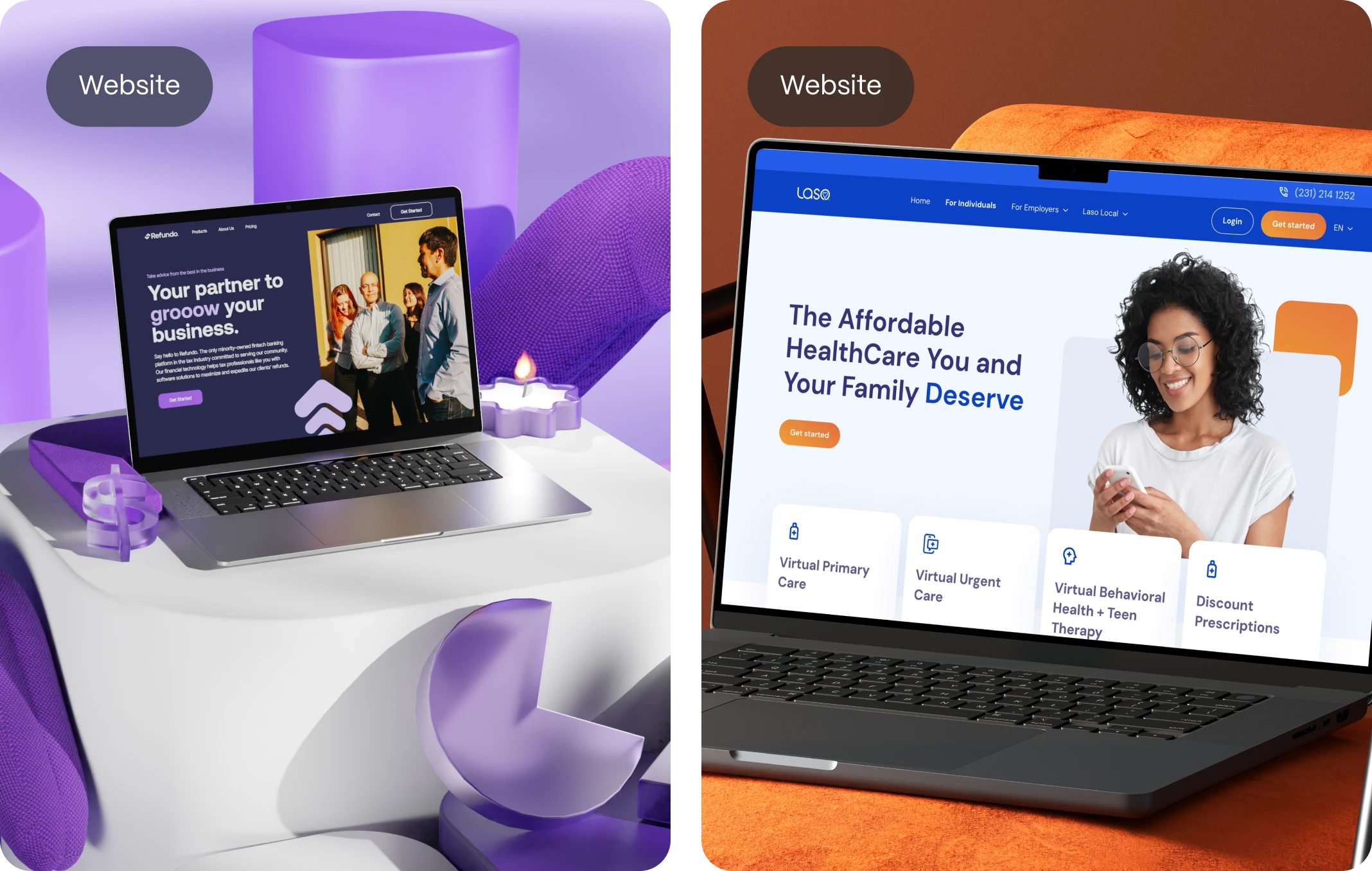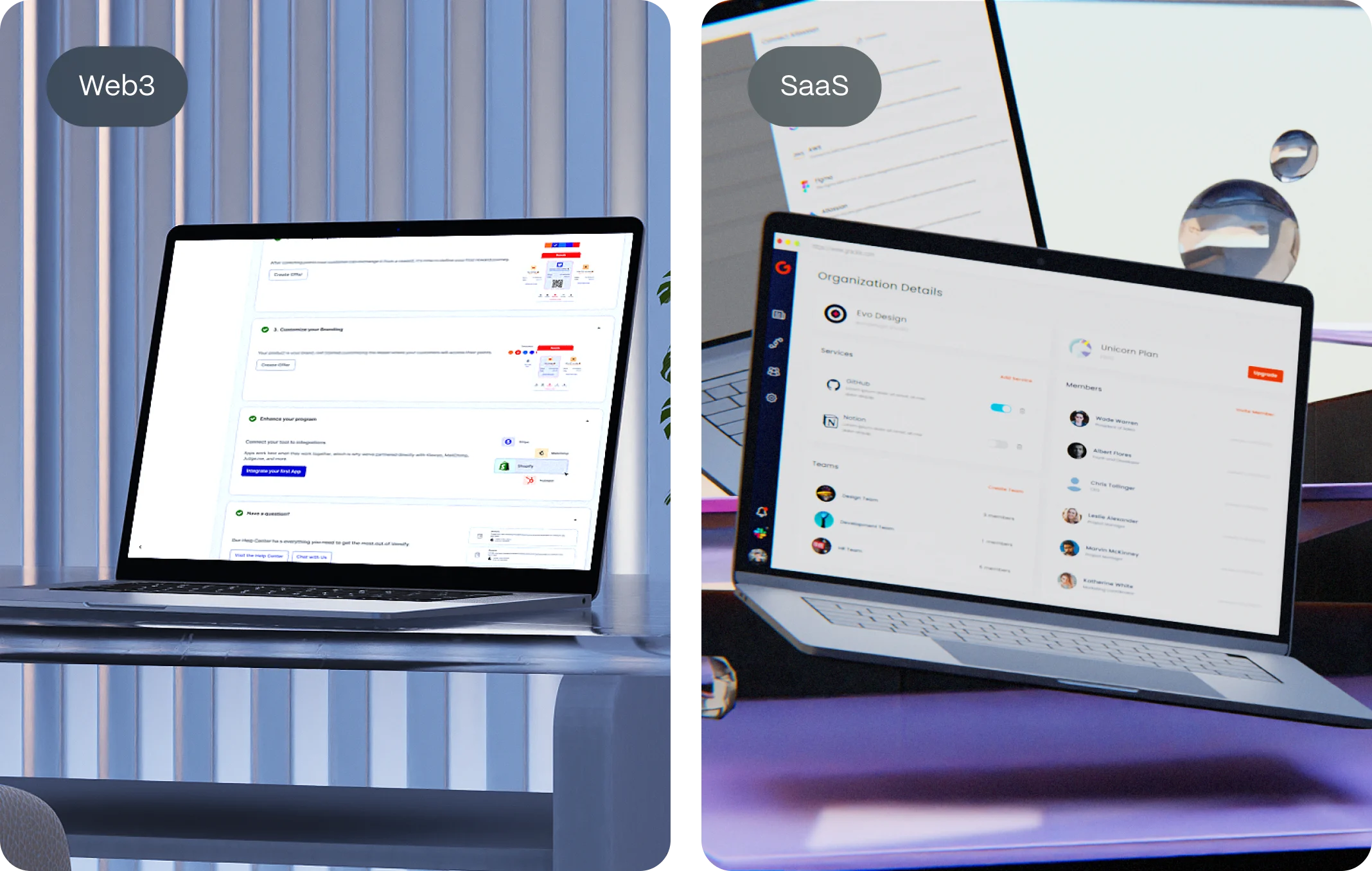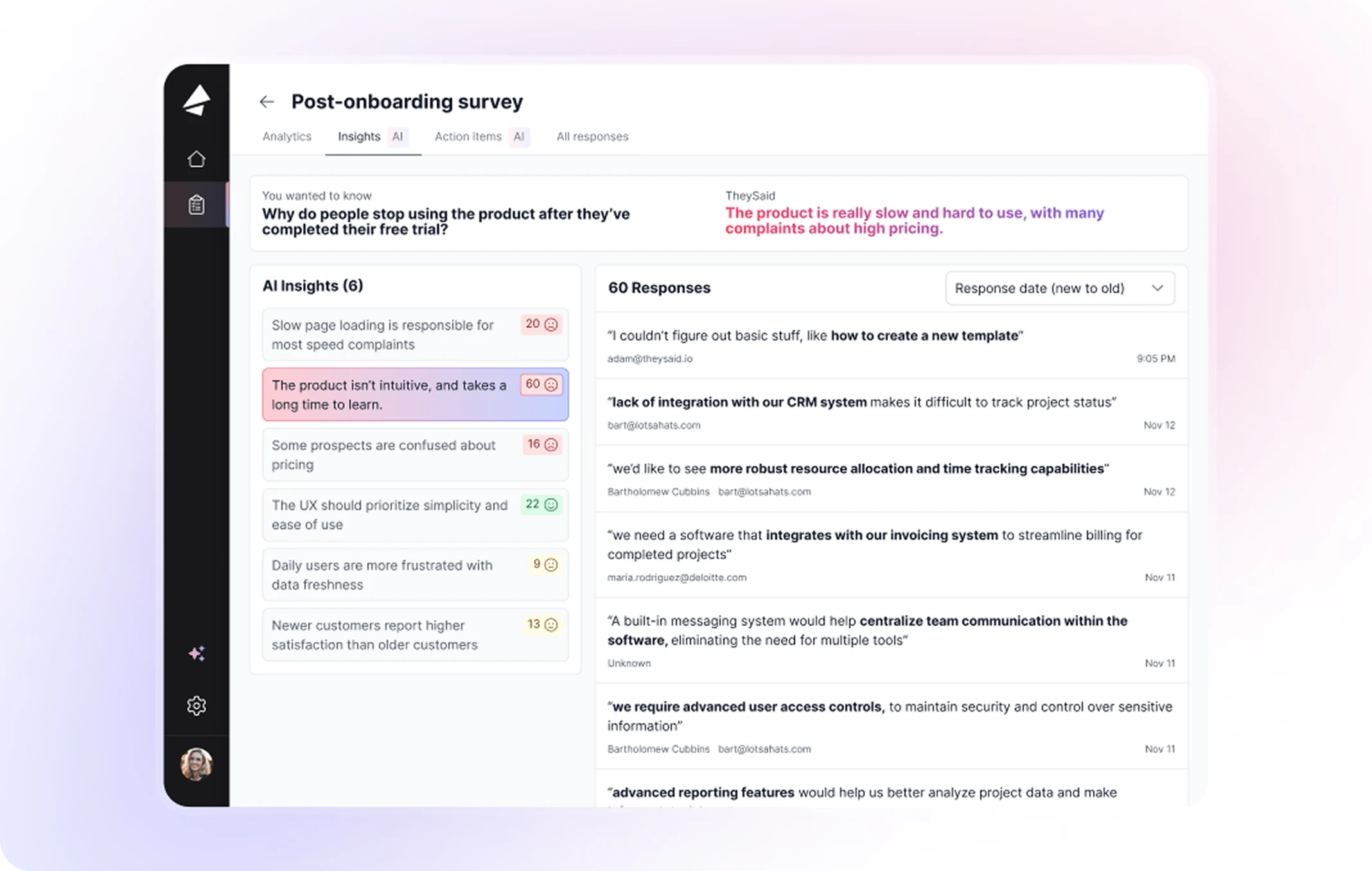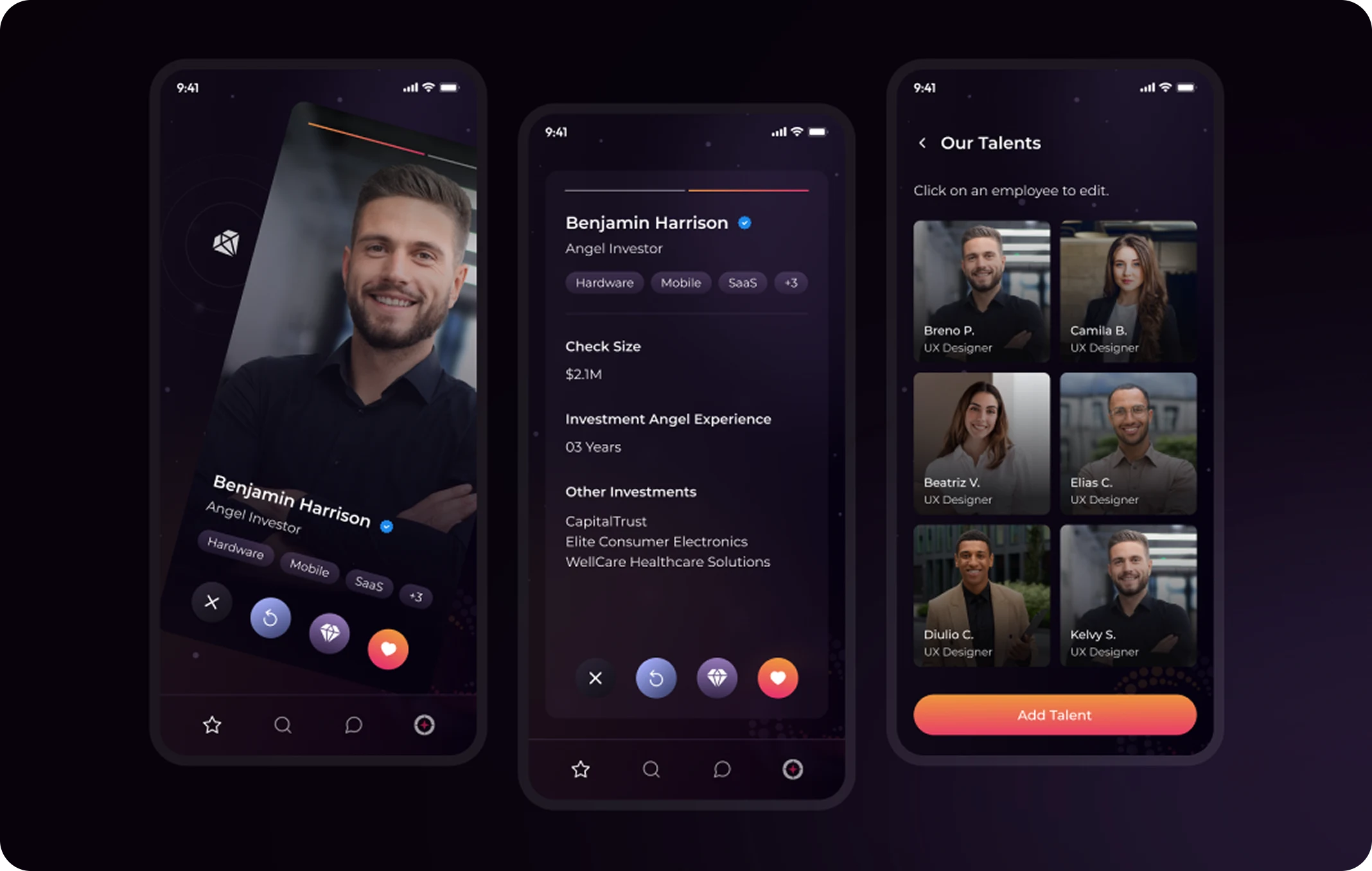Imagine this: a potential investor clicks your link after reading your pitch deck. Or maybe it’s a future customer scrolling through your Instagram ad. You’ve already paid for the click. The user is curious. But your site takes three… five… eight seconds to load. By then, they’re gone. And so is the opportunity.
In an era where attention is scarce and competition is global, your website speed need to be fast across devices, networks, and user contexts could be the difference between conversion and churn. Google knows this. Users expect it. And your growth depends on it.
In this deep-dive guide, we’ll unpack the why, how, and what behind website speed optimization—with a focus on Google PageSpeed Insights, Core Web Vitals, and real-world tools and tactics. Whether you’re launching your MVP or scaling your SaaS product, mastering your PageSpeed metrics is one of the highest-ROI moves you can make.
Why Website Speed Matters More Than You Think
Website speed has become a decisive factor in the digital experience. In today’s online economy, every millisecond influences how users perceive your brand, how they interact with your interface, and whether they decide to stay or leave. When a user visits your website, they are not merely accessing information—they are forming an impression of your startup’s credibility, technical maturity, and commitment to delivering value. A slow-loading site often signals disorganization, outdated technology, or poor attention to detail, none of which inspire trust or engagement.
Speed is also a critical contributor to conversion rate performance. Research consistently shows that even slight delays in page load time can significantly impact key business metrics. According to studies by Google and Akamai, a delay of just one second can lead to a measurable drop in conversions, while three seconds of latency can double the abandonment rate. For startups operating in high-stakes markets where user acquisition costs are high and attention spans are short, slow performance becomes an invisible tax on growth. Improving speed is not about marginal gains—it is about reclaiming lost opportunities.
From an engineering perspective, website speed also reflects the quality of your technical implementation. Efficient loading sequences, minimized render-blocking resources, and well-structured content delivery pipelines are hallmarks of modern development practices. These optimizations not only benefit the end user but also reduce infrastructure strain, lower bandwidth costs, and improve scalability. In a startup environment where team resources are often stretched, investing in performance upfront can prevent compounding technical debt down the line.
Equally important is the role that speed plays in the perception of responsiveness. A fast website doesn’t just load quickly—it feels alive. It creates a sense of fluidity that invites exploration and sustained interaction. Users are more likely to navigate deeper into your product pages, fill out lead forms, and return later. This behavioral pattern increases the likelihood of conversion, word-of-mouth referrals, and long-term brand loyalty. The more responsive your website feels, the more users perceive your startup as capable, competent, and ready to serve their needs.
Finally, speed is a measurable metric that directly influences your visibility on search engines. Google’s ranking algorithms now take performance indicators into account, particularly through the Core Web Vitals framework. A site that scores poorly on metrics such as Largest Contentful Paint (LCP) or Interaction to Next Paint (INP) is more likely to suffer lower rankings, regardless of the quality of its content. This creates a direct link between speed and discoverability—two levers that startups cannot afford to overlook.
What Is Google PageSpeed Insights?
Google PageSpeed Insights is a diagnostic and benchmarking tool developed by Google to assess the performance of individual web pages. Its primary function is to help developers and site owners understand how efficiently a page loads and behaves in both mobile and desktop environments. The tool combines simulated load tests with real-world usage data, producing a report that not only scores performance but also identifies specific elements that may be contributing to latency or usability issues.
At its core, PageSpeed Insights integrates Google’s open-source Lighthouse framework to perform audits. These audits simulate how a typical user would experience the page under predefined conditions, including emulated mobile hardware and slow network speeds. The tool then evaluates various performance metrics—such as Time to First Byte (TTFB), First Contentful Paint (FCP), and Total Blocking Time (TBT)—to create a composite score between 0 and 100. A higher score reflects better optimization practices and greater adherence to modern web performance standards.
Beyond lab simulations, PageSpeed Insights also incorporates field data collected via the Chrome User Experience Report (CrUX). This dataset provides anonymized, aggregated metrics from real users accessing the page across different devices and geographies. By analyzing both synthetic and empirical data, PSI delivers a holistic view of how a page performs not just in theory but in actual use cases. This dual-layered insight is particularly valuable for startups whose audiences might vary widely in terms of connectivity, device capability, or geographic location.
The performance score is categorized into three color-coded ranges: red (0–49), indicating poor performance; orange (50–89), indicating the need for improvement; and green (90–100), signifying optimal performance. However, it’s important to interpret these numbers with nuance. A score alone doesn’t tell the full story—it’s the underlying diagnostics and improvement opportunities that provide actionable value. These include suggestions like reducing unused CSS, deferring non-critical JavaScript, optimizing images, or implementing caching strategies.
Google PageSpeed Insights has become a critical resource for developers, designers, and growth teams alike because it bridges the gap between user experience and technical execution. It surfaces bottlenecks that affect not only speed but also stability, accessibility, and search visibility. In the context of a startup, where every interaction and impression matters, PSI is not just a tool for audits—it’s a guide for shaping faster, leaner, and more engaging digital experiences. When used regularly and strategically, it becomes a foundation for iterative performance optimization.
Core Web Vitals – The New Standard in Speed and Experience
Core Web Vitals are a set of standardized performance metrics introduced by Google to quantify key aspects of real-world user experience on the web. These metrics go beyond traditional load time measurements and instead focus on how users perceive the responsiveness, stability, and visual readiness of a page. By emphasizing metrics grounded in human experience, Core Web Vitals have become instrumental in shaping how websites are evaluated for both usability and search engine performance.
The three metrics currently defined under the Core Web Vitals umbrella are Largest Contentful Paint (LCP), Interaction to Next Paint (INP), and Cumulative Layout Shift (CLS). Each one targets a distinct dimension of user perception:
- Largest Contentful Paint (LCP) measures the time it takes for the largest visible element on the screen—typically a hero image, heading, or primary content block—to become fully rendered. A fast LCP (under 2.5 seconds) indicates that the page is loading in a way that feels quick and visually complete.
- Interaction to Next Paint (INP) is the evolution of the older First Input Delay (FID) metric. It captures the time between a user interaction (such as clicking a button) and the moment the interface visually responds. Lower INP scores reflect a smoother and more immediate feedback loop, contributing to a sense of interface fluidity and control.
- Cumulative Layout Shift (CLS) quantifies the total amount of unexpected visual movement on a page. Layout shifts often occur when fonts load late, images lack size attributes, or ads push content downward. A CLS score below 0.1 is considered ideal, as it ensures visual stability and prevents user frustration.
Google’s decision to incorporate Core Web Vitals into its ranking algorithm signifies a broader shift toward valuing user-centered performance. Rather than rewarding sites that simply load “fast,” search engines now prioritize those that load predictably, respond instantly, and remain visually coherent throughout the experience. This elevates the role of developers and designers from code optimizers to architects of human-centered digital systems.
For startups, achieving strong Core Web Vitals is not just about SEO advantage—it’s about ensuring that every user interaction reinforces brand quality and product usability. These metrics should serve as benchmarks for engineering teams, as guardrails for design consistency, and as KPIs within product and growth teams. Improving them often requires cross-functional collaboration between front-end developers, UX designers, content strategists, and infrastructure engineers. Addressing LCP might involve optimizing image delivery and server response times. Improving INP could mean simplifying JavaScript or reducing thread-blocking resources. Lowering CLS may require better layout planning and font rendering strategies.
By focusing on Core Web Vitals, startups align their technical efforts with tangible user outcomes. These metrics offer a shared language to guide performance work across disciplines and help ensure that digital experiences feel seamless, intuitive, and trustworthy from the very first click.
How to Run a Speed Test Using PageSpeed Insights
Running a performance test using Google PageSpeed Insights is a foundational practice for any team committed to building fast, responsive, and user-centered websites. While the tool itself is straightforward to use, interpreting its results and acting on them requires a structured, analytical approach. For startups, where development time is precious and iteration speed is key, mastering this diagnostic process enables teams to make informed decisions that directly affect user retention, SEO rankings, and technical scalability.
To begin a test, visit PageSpeed Insights and enter the full URL of the page you wish to analyze. Once submitted, the tool will evaluate the page through two primary lenses: lab data and field data. Lab data refers to simulated performance results generated using the Lighthouse engine under controlled conditions. This data provides consistency across tests and is useful for debugging. Field data, on the other hand, is sourced from the Chrome User Experience Report and reflects how actual users experience your page in real-world conditions, across varying devices, locations, and connection speeds.
Each PageSpeed Insights report is divided into key sections, starting with a performance score ranging from 0 to 100. While this score offers a general benchmark, its real value lies in the granular insights provided below. The report includes detailed evaluations of the three Core Web Vitals—LCP, INP, and CLS—followed by a set of “Opportunities” and “Diagnostics.” Opportunities highlight specific areas where performance could be improved, often with potential time savings in seconds. Diagnostics provide additional technical context, such as whether the main thread is being blocked or how many unused CSS rules are being loaded.
To get the most value from a PSI test, it’s important to analyze both the mobile and desktop reports separately. Mobile users often experience different performance profiles due to network limitations, CPU throttling, or device constraints. Since Google predominantly uses mobile-first indexing for its search algorithm, optimizing for mobile performance should be a top priority. Pay close attention to metrics like Time to Interactive (TTI) and Speed Index, which indicate how quickly the page becomes usable and visually complete for the visitor.
It’s also important to understand that performance results can vary depending on the time of day, server conditions, and third-party dependencies. To mitigate these variations, run multiple tests and look for consistent patterns in the diagnostics. If your site uses dynamic content or personalization, test different user journeys or states to evaluate performance holistically. Additionally, combine PSI results with insights from complementary tools like WebPageTest, GTmetrix, or Chrome DevTools to uncover deeper performance characteristics.
Ultimately, PageSpeed Insights is not just a technical report—it’s a map. It reveals where your site’s performance bottlenecks are hiding and provides a prioritized list of actions to resolve them. For startups, especially those in early growth stages, using PSI as part of a continuous performance monitoring workflow ensures that speed is not left behind in the rush to scale. Integrating speed audits into your development cycle can reduce future rework, improve launch quality, and create more consistent experiences for users and stakeholders alike.
Other Powerful Website Speed Testing Tools
While Google PageSpeed Insights is one of the most widely used tools for measuring website performance, it is not the only one—nor should it be the sole source of truth. To gain a complete, multidimensional understanding of how your website performs under different conditions, it’s essential to leverage a diverse set of speed testing tools. Each of these platforms offers unique capabilities, perspectives, and data types that can inform deeper technical optimizations and broader product decisions.
1. GTmetrix
GTmetrix is a performance testing platform that excels in offering highly visual, step-by-step breakdowns of how a webpage loads over time. It uses both Lighthouse and its proprietary metrics to display detailed Waterfall charts, which illustrate every resource request made by the browser—from images and fonts to scripts and stylesheets. These charts are particularly valuable for identifying long response times, blocked scripts, or failed asset loads. GTmetrix also provides time-based benchmarks such as Time to First Byte (TTFB), Fully Loaded Time, and First Paint, allowing teams to analyze how server configuration, caching layers, and third-party scripts are affecting overall performance.
In addition to testing, GTmetrix allows users to simulate different connection types (e.g., DSL, 3G, LTE) and devices, making it easier to understand how the website behaves for audiences with varying levels of connectivity. For startups targeting emerging markets or mobile-first audiences, these insights are particularly valuable. The platform also supports historical tracking of performance data, which is useful for monitoring how recent changes impact site behavior over time.
2. WebPageTest.org
WebPageTest is a highly advanced and customizable tool trusted by developers and performance engineers worldwide. It allows for granular testing of websites from a wide range of global locations, browsers (including Chrome and Firefox), and network speeds. One of its standout features is the ability to perform multi-step transactions and capture video recordings of the load sequence. These videos, combined with its filmstrip view, enable teams to visualize precisely when content appears, becomes interactive, and stabilizes—insights that are often missed by numerical data alone.
Another valuable feature of WebPageTest is the support for advanced scripting, which lets developers mimic user interactions or test authenticated areas of a website. This is ideal for startups offering gated content, SaaS platforms, or e-commerce experiences where performance varies based on user roles or session states. By using WebPageTest, teams can diagnose performance degradation in dynamic or personalized scenarios that are not easily tested by simpler tools.
3. Lighthouse via Chrome DevTools
Lighthouse is the performance auditing engine behind Google PageSpeed Insights, but it’s also available as a standalone tool within Chrome DevTools. This version gives developers more control and visibility when debugging performance locally. From within the browser, users can initiate audits, examine runtime performance, and capture snapshots of specific issues affecting layout rendering, JavaScript execution, or DOM complexity.
Running Lighthouse directly in DevTools also allows developers to test staging environments or work-in-progress builds before deploying to production. It integrates seamlessly into local development workflows, making it easier to incorporate performance audits into the build-measure-learn loop of lean product development. It also supports additional audits for SEO, accessibility, and progressive web app (PWA) readiness—giving startups a comprehensive view of their digital health in a single testing session.
4. Pingdom Tools
Pingdom is a performance monitoring service that emphasizes simplicity, clarity, and historical uptime tracking. It’s particularly well-suited for non-technical stakeholders who want to monitor site health, receive alerts when performance drops, or assess loading speed from different regions around the world. While Pingdom doesn’t offer as much diagnostic depth as WebPageTest or Lighthouse, it excels at providing executive-level summaries and comparative benchmarks.
The ability to set up automatic checks and uptime monitoring makes Pingdom a practical choice for startups that need early warnings about performance regressions or outages. This tool is especially useful when combined with real-time alerts sent via Slack, email, or third-party integrations—enabling teams to respond quickly to unexpected issues.
5. Chrome User Experience Report (CrUX)
CrUX is a public dataset provided by Google that aggregates real-world performance data from users of the Chrome browser. It reflects how pages perform across millions of devices, connection types, and geographies, making it an authoritative source for field data. CrUX is the same dataset used in PageSpeed Insights but is also available via BigQuery and can be queried for deeper longitudinal studies and comparisons with competitor domains.
Startups can use CrUX to understand how their site performs across actual user conditions, identify variations by geography, and benchmark against competitors in their vertical. It supports proactive performance management by revealing patterns that might not be evident in lab tests, such as the performance impact of third-party services or regional CDN behavior.
Common Factors That Slow Down Websites
When a website underperforms in speed metrics, the root causes are often hidden beneath layers of visual polish and functional complexity. Identifying these performance bottlenecks requires a systematic understanding of the various technical and architectural elements that contribute to page load time. For startups building products in fast-paced environments, diagnosing and eliminating these inefficiencies early can dramatically improve user experience, reduce bounce rates, and maximize the impact of every marketing and development dollar.
1. Unoptimized Images
Images are often the largest and most bandwidth-intensive assets on a website. When left uncompressed or served in legacy formats like JPEG or PNG without consideration for resolution or content context, they can dramatically slow down page rendering. Oversized hero images, background patterns, or decorative graphics contribute significantly to slower Largest Contentful Paint (LCP) scores. Optimizing images involves more than just compression—it requires selecting the appropriate format (e.g., WebP or AVIF), using responsive image techniques like srcset, and delivering assets through a content delivery network (CDN) that supports on-the-fly transformations.
2. Excessive JavaScript
JavaScript is essential for interactivity, but when overused or poorly managed, it becomes a major source of performance degradation. Large JavaScript bundles increase Time to Interactive (TTI) and delay browser rendering processes, especially on low-powered mobile devices. Common culprits include unused libraries, inline scripts that block rendering, or third-party tools such as tracking pixels and analytics services. Refactoring JavaScript for modularity, removing unnecessary dependencies, deferring execution, and leveraging asynchronous loading patterns are essential techniques for reducing load impact and improving responsiveness.
3. Render-Blocking Resources
When a browser encounters CSS or JavaScript files marked as critical to rendering, it must download and process them before displaying any content to the user. These are known as render-blocking resources. If these files are large or served inefficiently, they delay First Contentful Paint (FCP) and LCP. Render-blocking CSS often stems from bloated frameworks or global stylesheets that aren’t critical for above-the-fold content. Solving this issue involves inlining critical CSS for initial layout, deferring non-essential styles and scripts, and carefully sequencing asset loading to prioritize user-visible content first.
4. Lack of Lazy Loading
Websites that load all media assets at once—regardless of whether the user will ever scroll down to see them—consume bandwidth and processing power unnecessarily. Without lazy loading, browsers are forced to fetch and decode every image, video, and iframe before the page is fully usable. This can lead to inflated load times and poor user-perceived performance. Implementing lazy loading with the native loading=lazy attribute or using JavaScript-based solutions allows developers to defer the loading of assets until they are needed, reducing initial load time and improving Speed Index scores.
5. Inefficient Font Delivery
Webfonts can enhance the visual identity of a brand, but if not implemented thoughtfully, they introduce measurable delays in page rendering. Fonts are treated as render-blocking resources by default, and if they are not properly preloaded or subsetted, they cause what is known as the “flash of invisible text” (FOIT) or “flash of unstyled text” (FOUT). To avoid these issues, developers should preload key fonts using the <link rel=”preload”> tag, use font-display settings like swap, and generate font subsets that include only the glyphs needed for a given locale or UI context.
6. Overuse of Third-Party Scripts
Third-party tools such as chat widgets, heatmaps, ad services, social share buttons, and embedded videos can significantly bloat the JavaScript footprint and introduce unpredictable performance problems. These scripts often execute outside the developer’s control, block rendering threads, and delay interactivity. Each additional third-party dependency introduces another point of failure or latency. Startups should audit these integrations regularly, remove those that do not provide a clear return on investment, and isolate necessary scripts using techniques like sandboxed iframes or request deferral.
7. Suboptimal Hosting Infrastructure
Even a well-optimized website will suffer performance issues if hosted on unreliable or underpowered servers. Shared hosting environments often limit processing power and memory, causing slow server response times (high TTFB). Startups scaling their traffic should consider migrating to managed hosting providers, virtual private servers (VPS), or cloud-based infrastructure with geographic distribution through a CDN. Faster infrastructure ensures that assets are delivered quickly, especially in regions with poor connectivity or during peak traffic hours.
8. Lack of Caching Strategy
Caching plays a crucial role in improving repeat visit performance and reducing redundant network requests. Without proper caching headers, browsers are forced to re-download resources that haven’t changed, increasing load times unnecessarily. Developers should configure HTTP headers to leverage browser caching, enable server-side caching for dynamic content, and utilize CDN-level caching for global asset delivery. A strategic caching architecture improves perceived performance, reduces load on origin servers, and increases resilience under heavy traffic loads.
How to Optimize Website Speed – Best Practices
Optimizing website speed is not a one-time fix but an ongoing, iterative discipline that integrates development practices, design systems, infrastructure decisions, and user experience strategy. For startups, performance optimization should be approached as a product requirement—not as a technical afterthought. A fast website strengthens every touchpoint of your digital presence, from landing pages to checkout flows, from blog posts to web apps. Each optimization listed below represents a tactical lever to elevate perceived quality, increase discoverability, and enhance usability.
1. Compress and Resize Images Effectively
Images are essential for storytelling, branding, and engagement—but their weight can severely impact load performance if not handled with precision. Optimizing images starts with selecting the right format: WebP and AVIF typically offer smaller file sizes and better quality at lower compression levels compared to traditional JPEG or PNG formats. Additionally, images should be resized to the maximum resolution they are displayed at—serving a 4,000-pixel-wide banner when the viewport is 1,200 pixels is a costly mistake in terms of bandwidth and rendering time.
Implement responsive image delivery using the srcset attribute, which allows the browser to choose the best version based on screen size and resolution. Integrating automatic image optimization tools into your build or CMS workflow—such as ImageKit, Cloudinary, or Squoosh—can further streamline this process. For high-traffic websites, coupling image assets with a CDN ensures fast delivery and regional performance consistency.
2. Minify and Combine Code Assets
CSS, JavaScript, and HTML files often include spaces, comments, and formatting that are useful during development but unnecessary for users. Minification removes these characters, reducing file sizes and improving transfer speeds. Tools like Terser, UglifyJS, and CSSNano are commonly used to automate this process during the build phase. Combining files where possible can reduce the number of HTTP requests, although HTTP/2 has made this less critical than in the past.
In modular applications, especially those built with modern frameworks like React or Vue, consider using code splitting to serve only the necessary chunks per route. This allows pages to load faster by avoiding the loading of irrelevant components or scripts. A lean, structured bundle reduces parsing time, enhances Time to Interactive (TTI), and leads to more predictable performance across sessions.
3. Leverage Browser Caching and Cache-Control Headers
Caching allows browsers to store frequently used assets locally, preventing the need to re-download them on subsequent visits. By properly configuring Cache-Control, ETag, and Expires headers, developers can instruct browsers and intermediary caches (like CDNs or reverse proxies) to retain assets for defined periods. This reduces server load and accelerates repeat navigation.
Startup websites should focus on caching static files like logos, stylesheets, fonts, and JavaScript libraries for at least 30 days, while dynamic or user-specific content can be handled with shorter expiration or conditional caching policies. Auditing your cache strategy ensures that returning users receive an optimized experience, and it reinforces trust by reducing unnecessary delays and flickers.
4. Implement Lazy Loading for Media and Third-Party Elements
Lazy loading defers the loading of non-essential content until it’s actually needed by the user—typically when it enters the viewport. This is especially important for image-heavy pages, long-form content, or components like embedded videos and social media feeds. Native lazy loading using loading=”lazy” is now supported by most modern browsers and should be standard practice.
For third-party elements like YouTube embeds, consider using lightweight thumbnail previews that load the full iframe only after user interaction. This prevents third-party scripts from blocking the main thread during initial load. Similarly, widgets for chat, analytics, or personalization should be loaded asynchronously or conditionally to avoid disrupting the critical rendering path.
5. Prioritize Above-the-Fold Content
Users begin forming perceptions of speed as soon as the page starts rendering. Prioritizing above-the-fold content means ensuring that the first visible elements—headers, navigation bars, key text, and hero images—load as quickly as possible. To do this, developers must isolate and inline critical CSS, preconnect to necessary domains, and preload essential assets.
Critical CSS should be injected directly into the page’s <head> to ensure it loads before the rest of the stylesheet. Fonts and images required for the initial viewport should be preloaded using <link rel=”preload”>. By reducing layout shifts and increasing perceived performance, this strategy significantly improves Core Web Vitals such as LCP and CLS.
6. Optimize Hosting and Infrastructure Layers
Performance is strongly influenced by the quality of hosting infrastructure. Shared hosting plans often introduce latency due to resource contention. For growth-stage startups, migrating to a virtual private server (VPS), containerized platform (e.g., Docker on Kubernetes), or scalable cloud provider (like Vercel, Netlify, or AWS) allows for better control, monitoring, and response time.
Incorporate edge caching via global CDNs to bring your assets closer to users geographically. CDNs like Cloudflare, Fastly, or Bunny.net reduce latency, minimize packet loss, and accelerate content delivery. Infrastructure should be monitored continuously with tools like New Relic or Datadog to detect and resolve performance anomalies before they impact user experience.
7. Reduce the Impact of Third-Party Scripts
Third-party scripts are often added for analytics, marketing automation, chat support, or advertising—but they come at a performance cost. Each script introduces potential delays in page load and increases the risk of blocking the main thread. Evaluate the value of each integration and remove redundant or outdated ones.
For essential tools, use asynchronous loading (async or defer) and host scripts locally when possible to reduce DNS resolution time and increase control. Audit third-party performance regularly with tools like Request Map or WebPageTest to track their impact on speed and determine whether they are degrading metrics like INP or TTI.
Speed and Design – Finding the Balance
The relationship between website performance and visual design is often framed as a trade-off, but in practice, they are deeply interconnected disciplines that can and should be developed in tandem. A fast website does not require visual austerity, just as a beautiful interface doesn’t need to sacrifice efficiency. When planned strategically, a high-performance digital experience can deliver both aesthetic appeal and technical excellence—without compromising the emotional or functional impact on users.
For startups, visual design plays a critical role in communicating identity, legitimacy, and ambition. Typography, color schemes, layout grids, animations, and imagery are tools used to create emotional resonance and establish brand positioning. However, these same tools—if not implemented with performance in mind—can also introduce friction. Heavy assets, unoptimized interactions, and inefficient rendering logic often result from design decisions made in isolation from development constraints. Bridging this gap requires cross-functional collaboration and shared goals between designers and engineers from the very beginning of the project.
One of the most effective ways to align performance and design is by adopting a design system that incorporates performance standards as first-class components. This includes establishing image compression guidelines, defining animation principles based on motion design best practices, and limiting the use of custom fonts or oversized UI elements to situations where they create meaningful impact. By using modular, reusable components built with performance in mind, teams can move faster while preserving consistency and quality across the user interface.
Modern CSS techniques like container queries, CSS variables, and grid systems offer powerful ways to create visually rich layouts without relying on excessive scripts or DOM manipulation. Likewise, thoughtful use of SVGs over raster images and leveraging hardware-accelerated transitions can create elegant visual effects with minimal performance cost. Animations should be used to guide attention and provide feedback—never as decorative flourishes that delay content visibility or interfere with page rendering.
Performance budgets are another effective tool to maintain design-performance balance. By setting clear limits on page weight, number of requests, and render-blocking resources, teams can evaluate design choices through a pragmatic lens. For example, a performance budget might specify that hero images cannot exceed 200kb or that no more than two custom fonts should be loaded per page. These constraints foster creativity within boundaries and keep design explorations grounded in user experience realities.
It is also essential to test design prototypes under real-world conditions. Tools like Chrome DevTools allow designers and developers to throttle network speeds, emulate devices, and analyze how a page feels for users on low-end smartphones or poor connections. This empathetic approach ensures that decisions made in high-resolution design tools translate effectively into inclusive, high-performance digital experiences.
In practice, design and performance are not opposing forces—they are components of a unified product vision. When startups integrate these disciplines early in the process, the results are interfaces that not only impress visually but also deliver immediate, fluid, and intuitive user experiences. This harmony translates directly into longer engagement times, stronger brand affinity, and improved conversion rates.
The Business Case for Speed
The speed of a website is not just a technical feature—it is a direct business driver that influences revenue, customer satisfaction, operational efficiency, and brand reputation. In competitive digital markets, where user expectations are shaped by leading tech platforms, a slow website is perceived not only as inconvenient but also as unprofessional. For startups operating in fast-moving environments and relying on digital channels for acquisition and retention, optimizing performance becomes a strategic imperative with measurable financial returns.
Research consistently validates the link between speed and conversion. A widely cited study by Google in partnership with Deloitte revealed that a 0.1-second improvement in mobile site speed led to an 8.4% increase in conversions for retail websites and a 10.1% increase for travel sites. These gains are not marginal—they represent material outcomes driven by small yet impactful improvements in user experience. Faster websites reduce friction in the decision-making journey, increase trust, and improve users’ willingness to complete tasks such as signing up, making a purchase, or submitting a lead form.
Website speed also has a powerful influence on search engine visibility. Google’s Core Web Vitals, now part of its ranking algorithm, elevate websites that deliver fast, stable, and responsive experiences. A higher ranking in search results translates to increased organic traffic, lower customer acquisition costs, and greater reach without a corresponding increase in advertising spend. For startups with limited marketing budgets, investing in performance optimization is one of the most cost-effective ways to drive sustained traffic growth.
Speed is equally critical in improving engagement metrics, such as time on page, scroll depth, and return visit rate. When users experience fast load times, they are more likely to explore content, interact with features, and view additional pages. This creates a compounding effect: the more users engage, the more data startups can collect to improve personalization, product development, and targeting strategies. Faster experiences also reduce bounce rates, which signals to search engines that the content is relevant and the site trustworthy.
From an infrastructure standpoint, a well-optimized website consumes fewer resources and scales more efficiently. By reducing asset sizes, deferring non-critical scripts, and leveraging caching, companies can decrease bandwidth usage, server load, and hosting costs. This not only improves performance under normal conditions but also protects the system from degrading during traffic spikes, such as product launches, PR coverage, or ad campaigns. Optimizing speed can therefore extend the life of existing infrastructure and delay costly server upgrades or migration projects.
Speed also plays a subtle yet powerful role in brand perception. Users interpret fast experiences as a signal of competence, technical maturity, and customer centricity. They feel respected and prioritized when a digital product responds quickly and fluidly to their actions. Conversely, sluggish or unresponsive interfaces imply neglect, disorganization, or lack of polish—qualities that undermine confidence in the company behind the interface. For early-stage startups building their first impressions with customers, partners, and investors, website performance becomes a silent ambassador of quality and intent.
In growth-stage companies, performance improvements also support the work of sales and customer success teams. A fast-loading pricing page, documentation portal, or demo experience creates smoother touchpoints during critical moments in the buyer journey. Marketing funnels convert more predictably. Activation flows feel seamless. Support content becomes easier to access and share. Each of these benefits compounds over time, creating operational leverage and improving alignment across departments.
Ultimately, investing in speed is a high-leverage decision. It multiplies the effectiveness of every other initiative—be it SEO, paid acquisition, UX design, or product adoption. For startups aiming to maximize outcomes with constrained resources, performance optimization is not just a technical checkbox—it is a cornerstone of a scalable, sustainable, and conversion-optimized growth strategy.
FAQ – PageSpeed Insights & Website Speed
What is a good PageSpeed Insights score?
Aim for 90+ on both mobile and desktop. However, focus more on real-world Core Web Vitals than just the lab score.
How often should I test my website speed?
At least once a month, or after every major content, design, or code update.
Is Google PageSpeed Insights accurate?
It’s a reliable tool, but use it alongside others (GTmetrix, WebPageTest) for a complete picture.
What slows down a website the most?
Typically: unoptimized images, too many scripts, slow hosting, render-blocking resources, and inefficient CSS.
Can plugins fix speed issues?
Partially. Caching and minification plugins help, but core issues like poor architecture or design bloat need deeper solutions.
Does a slow site hurt my SEO?
Yes. Google considers speed a ranking factor, especially for mobile-first indexing. It also affects bounce rate and user behavior—both of which influence search performance.










